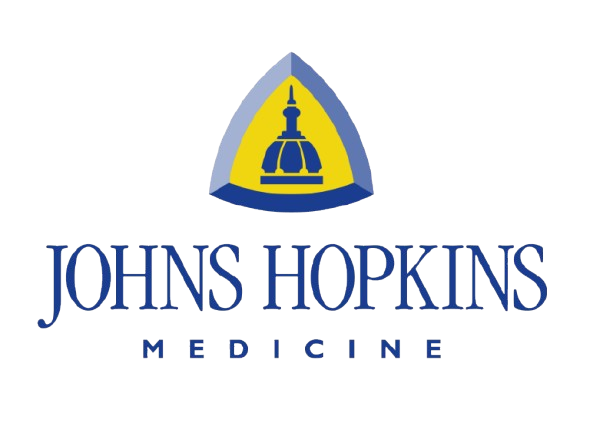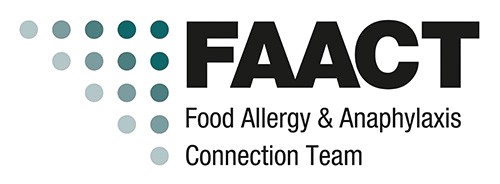
Eight (8) Medical Authority Sites
(Mayo Clinic, Johns Hopkins & …)
For WebSITE Click on Logo
Summary by Medical Authority Site
WebMD – Anaphylaxis Resources
WebMD provides a practical, consumer-friendly breakdown of anaphylaxis. It defines the condition as a severe, life-threatening allergic reaction, explains what happens in the body, and outlines the four stages of reaction, from mild to critical. Clear details are given on symptoms (skin, respiratory, cardiovascular, gastrointestinal), causes (foods, medications, insect stings, latex), and risk factors (history of allergies, asthma, family predisposition). Treatment guidance emphasizes immediate epinephrine use as first-line therapy, followed by emergency medical care. WebMD also explains prevention strategies, such as allergen avoidance and carrying an epinephrine auto-injector, and warns about complications, including biphasic reactions and long-term anxiety.
Mayo Clinic – Anaphylaxis Resources
Mayo Clinic offers a medically authoritative, structured overview. The overview explains the rapid onset and severity of anaphylaxis. Symptoms are divided into early (hives, swelling, wheezing) and advanced (low blood pressure, loss of consciousness). The site stresses when to seek medical care, including immediate use of epinephrine. Causes include food, medications, and insect venom, while risk factors highlight coexisting asthma, previous reactions, and age. Complications like shock or cardiac arrest are addressed. The clinic also provides prevention strategies, such as allergy testing, strict avoidance, emergency action plans, and family training in auto-injector use.
Cleveland Clinic – Anaphylaxis Resources
Cleveland Clinic organizes anaphylaxis education into patient-centered categories. The overview covers what anaphylaxis is and why it is life-threatening. Symptoms and causes are explained together for clarity, with emphasis on rapid onset and common triggers. The section on diagnosis and tests covers how doctors confirm reactions via clinical history and sometimes blood or skin testing. Treatment focuses on epinephrine and supportive hospital care. Prevention is explained through allergen avoidance, prescriptions for epinephrine, and education. The outlook/prognosis page emphasizes recovery potential with prompt treatment, while the living with section provides practical lifestyle guidance for long-term management.
Allergy UK – Anaphylaxis Resources
Allergy UK focuses on public awareness and practical action tools. It highlights the Anaphylaxis Aware sign campaign for visibility in communities, along with adrenaline action guidance showing when and how to use emergency medication. The action sheet is a step-by-step emergency plan for patients and carers. Practical guides such as “How to Use an EpiPen” include visuals and instructions to ensure correct administration. These resources are geared toward families, schools, and workplaces to improve response preparedness and reduce risk of fatal delay.
National Allergy Council – Anaphylaxis Resources
This Australian body emphasizes clinical best practice and positioning. The guidance includes correct anaphylaxis positioning (lying flat, elevating legs, avoiding standing suddenly). It also outlines the Australia Acute Anaphylaxis Clinical Care Standard, which sets benchmarks for hospitals and clinicians, ensuring patients receive standardized care—from recognition to adrenaline administration and discharge planning. This resource bridges medical professionals and patient safety guidelines.
Johns Hopkins – Anaphylaxis Resources
Johns Hopkins Medicine delivers clear, authoritative explanations. It defines what anaphylaxis is, details symptoms, and covers diagnosis methods (clinical history, allergy testing). Treatment guidance stresses epinephrine, 911 calls, and follow-up care. Preventive advice includes allergen avoidance and carrying an auto-injector. Importantly, it specifies when to call for help, stressing immediate emergency care for any suspected reaction, reinforcing that hesitation can be fatal.
FAACT – Food Allergy & Anaphylaxis Connection Team Resources
FAACT specializes in educational and visual tools. Its poster of signs and symptoms highlights recognition cues for children and adults. Another emergency poster provides quick instructions for schools, workplaces, and families. FAACT also supplies an emergency action plan, offering a standardized document for healthcare providers, schools, and caregivers to act swiftly during an episode. This makes it especially useful for families managing food allergies daily.
ASCIA – Australasian Society of Clinical Immunology and Allergy Resources
ASCIA provides multilingual and checklist-based tools. Its translation resources (23 languages) make critical information globally accessible, particularly for travelers and multicultural communities. The anaphylaxis checklist is a structured step-through for preparedness (carrying epinephrine, knowing triggers, training caregivers). Their first aid translations give culturally inclusive guidance on emergency response. ASCIA’s focus is on inclusivity, accessibility, and standardized education.
Resources and Further Reading
- What you should know about anaphylaxis
- Food allergies: what to do if someone has an anaphylactic reaction: Excellent article by Dr. Mark Porter an UK NHS GP and columnist for The Times, that covers details of how to use EpiPens, when to use EpiPens (better to give it when it is not needed ), when/why to use a second EpiPen, what to do if you do not have an EpiPen, and to beware of apparent miraculous recovery.
- How to Properly Position a Patient Suffering Anaphylaxis While Waiting for EMS: While continuously observing the patient to determine whether a second dose of epinephrine is necessary, it is important to position them correctly to help avoid shock and ensure their breathing remains unobstructed. Video:
- Biphasic Anaphylaxis Is Difficult to Predict, Can Occur Much Later Than Initial Reaction: The reason you MUST visit the emergency department after an anaphylactic reaction — even if your symptoms subside after an injection of epinephrine — is because symptoms can recur minutes or even hours later. This is known as biphasic anaphylaxis.
- Anaphylaxis FAACTs: Summary by FARE includes links to alternatives to EpiPens and airborne exposure risk for peanuts and shellfish.
- Allergyhome.org: A guide for parents and families. Provides what to do’s If you think your child is experiencing an anaphylactic reaction
- Understanding Infant Anaphylaxis: Severe Allergic Reactions in Babies
- Anaphylaxis Wallet Card
- Allergy and Anaphylaxis Emergency Plan
- Anaphylaxi Frequently Asked Questions Translated into 23 languages







